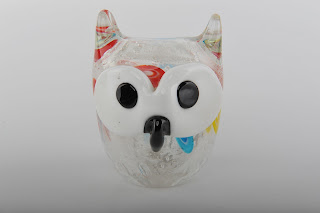Natural glass has existed since the beginnings of time, formed when certain types of rocks melt as a result of high-temperature phenomena such as volcanic eruptions, lightning strikes or the impact of meteorites, and then cool and solidify rapidly. Stone-age man is believed to have used cutting tools made of obsidian (a natural glass of volcanic origin).
According to historians, Phoenician merchants transporting stone actually discovered glass in the region of Syria around 5000 BC. The merchants, after landing, rested cooking pots on blocks of nitrate placed by their fire. With the intense heat of the fire, the blocks eventually melted and mixed with the sand of the beach to form an opaque liquid.
The earliest man-made glass objects are thought to date back to around 3500 BC, with finds in Egypt and Eastern Messopotamia. In the third millennium, in central Mesopotamia, the basic raw materials of glass were being used principally to produce glazes on pots and vases. The discovery has been coincidental, with calciferous sand finding its way into an overheated kiln and combining with soda to form a colored glaze on the ceramics. It was then, above all, Phoenician merchants and sailors who spread this new art along the coasts of the Mediterranean.
The oldest fragments of glass vases date back to the 16th century BC and were found in Mesopotamia. Hollow glass production was also evolving around this time in Egypt, and there is evidence of other ancient glassmaking activities emerging independently in Mycenae (Greece), China and North Tyrol.


No comments:
Post a Comment